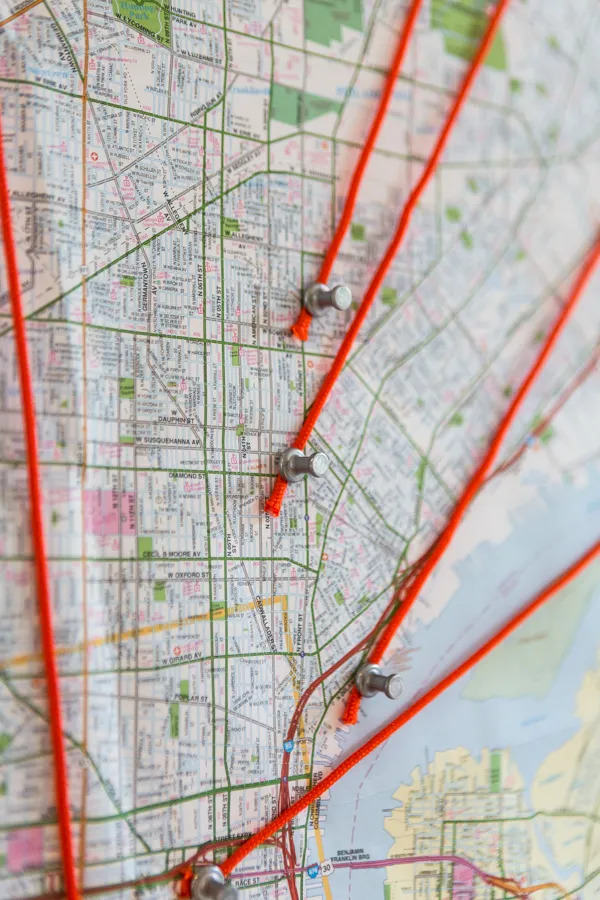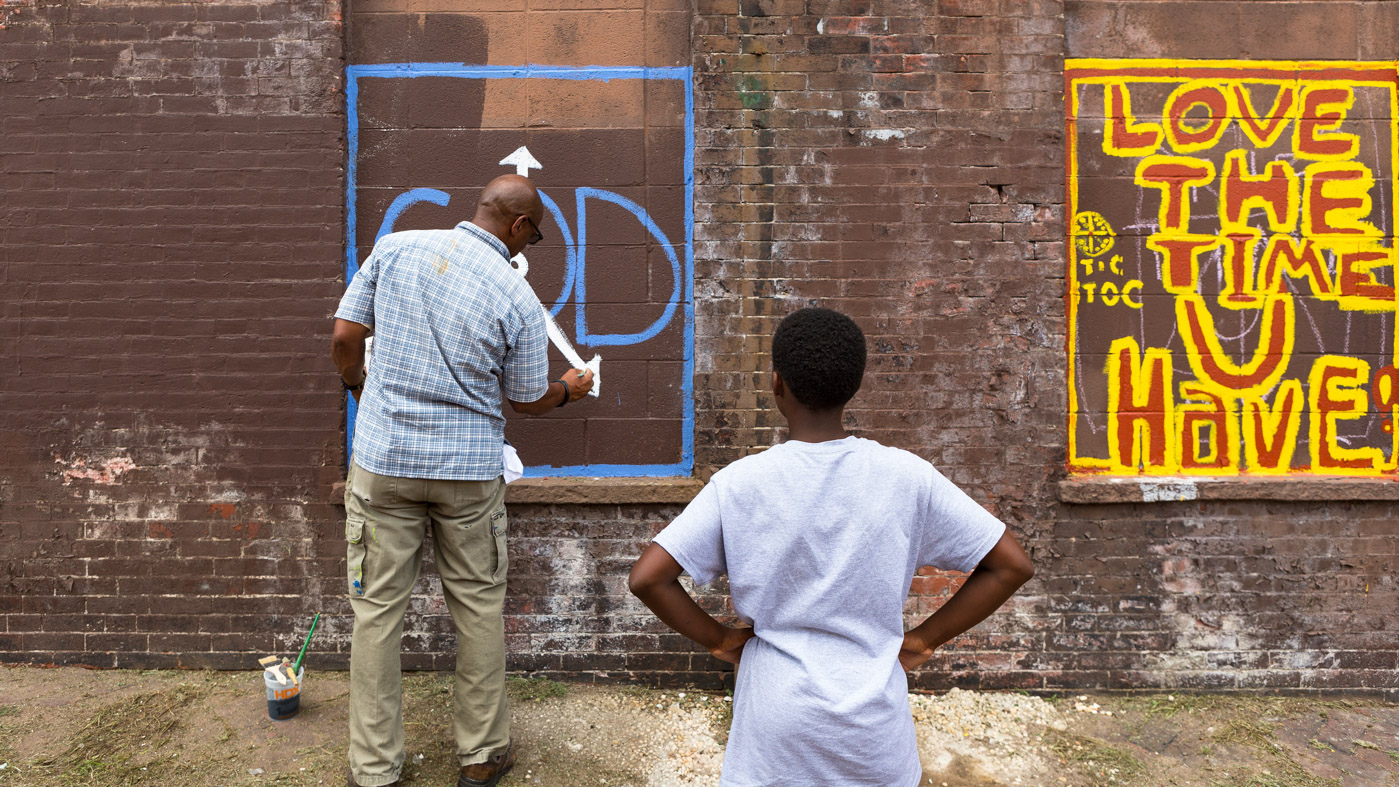A City of Public Squares

You might know that the original layout for the city of Philadelphia was planned around five public squares—an intentional choice to facilitate discourse and community, for a city built around democratic ideals. But in some ways, Philadelphia now has thousands of public squares in the murals that cover vertical surfaces all around the city. If you consider what a public square is, it might not seem so far-fetched.
The open spaces that are so common outside of the urban landscape are not present within a city, so we instead create them. A public park. A traffic circle with a fountain. A college quad. A segment of sidewalk. The value of public space within communities stretches back to the medieval commons, but it also speaks to an inherent human need for conversation and community. The demarcation of a public square invites you to look closer, to interrogate the space around you and engage with it, because you might otherwise just walk right through.
Jen Kinney of Next City calls each public square “a stage where citizens…engage with their civic identity.” This is a streamlined way of looking at it, but one that—like public space—should be interrogated. “Civic” is an adjective describing something or someone “of” a town or place, regardless of citizenship status (whereas “civil” is an adjective related to the citizen; see Harvard’s use above). Why define public space in terms of citizenship? Who took the land that is now considered public? Who used to steward this land? Who influences it today? What surrounds it? What forces threaten this communal space? There is no such thing as neutral. A public space is one that swarms with questions and possibilities. This is why community process and conversation lie at the core of Mural Arts’ practices.
We’ve worked recently with artist Tatyana Fazlalizadeh, whose portfolio speaks to questions about ownership of public space, and who is safe there. Her ongoing project Stop Telling Women to Smile reclaims public space through street art, interrogating the assumption that public space is male space (an assumption that underlies street harassment). Another ongoing project, When Women Disrupt, questions the assumptions that public space is white space, and that white space is neutral space. The five original squares of Philadelphia are indeed named for five white men. You can see Fazlalizadeh’s work on Broad Street right now as part of our We The People project.

Public space is so often about power dynamics, and the constant negotiation of who has a right to be seen and heard. The veteran community holds another perspective that often goes unseen and unheard, and our current project with artist Tyree Guyton in Kensington seeks to address this. Guyton’s longstanding work in Detroit, The Heidelberg Project, is an outdoor art environment that functions based on the belief that all people “have the right to grow and flourish in their communities…that a community can redevelop and sustain itself, from the inside out, by embracing its diverse cultures and artistic attributes.” Bringing this philosophy to Philadelphia, Guyton has worked with veterans and other community members, in partnership with community development center Impact Services, to create THE TIMES. This massive mural project covers three sides of a five-story building with imagery that pays homage to the role of time in healing and resilience, especially in the aftermath of trauma.

THE TIMES creates a public space for conversation around veterans—their lives and needs, and how they fit into the larger community around them. Is this not a civic conversation? In a sense, Guyton has created a public square where there was none before. It’s just vertical instead of horizontal. A mural can open up a new space for discourse, and Mural Arts has tried to do just that, all over Philadelphia. Our public art projects are created in collaboration with communities, with the intention of highlighting or strengthening the power and value that are already present and inherent. This is civic space, rather than civil space. This city is full of conversations. Join them.
Visit THE TIMES at our mural dedication this weekend, October 14 from noon–3 p.m.
Lead Monument Lab partners include the City of Philadelphia; Philadelphia Parks & Recreation; Office of Arts, Culture, and the Creative Economy; Historic Philadelphia; Independence National Historic Park; Penn Institute for Urban Research; Pennsylvania Academy of the Fine Arts; Price Lab for Digital Humanities; and the University of Pennsylvania.
Major support for Monument Lab projects staged in Philadelphia’s five squares has been provided by The Pew Center for Arts & Heritage.
An expanded artist roster and projects at five neighborhood sites have been made possible by a significant grant from the William Penn Foundation.
Lead corporate sponsor is Bank of America.
Additional support has been provided by Susanna Lachs & Dean Adler, William & Debbie Becker, CLAWS Foundation, Comcast NBCUniversal, Davis Charitable Foundation, Hummingbird Foundation, J2 Design, National Endowment for the Arts, Nick & Dee Adams Charitable Fund, Parkway Corporation, PECO, Relief Communications LLC, Sonesta Philadelphia Rittenhouse Square, Stacey Spector & Ira Brind, Tiffany Tavarez, Tuttleman Family Foundation, Joe & Renee Zuritsky, and 432 Kickstarter backers. Support for Monument Lab‘s final publication provided by the Elizabeth Firestone Graham Foundation.
Media partner: WHYY